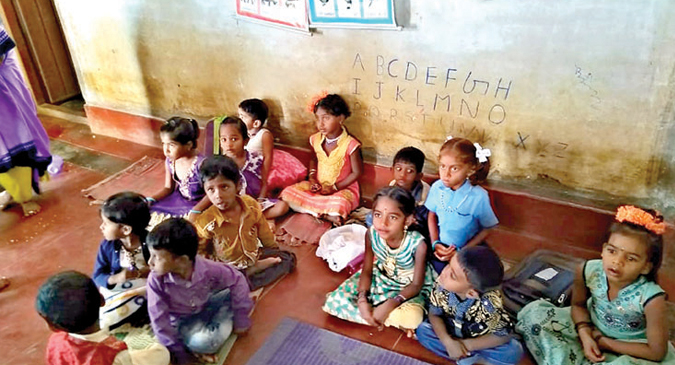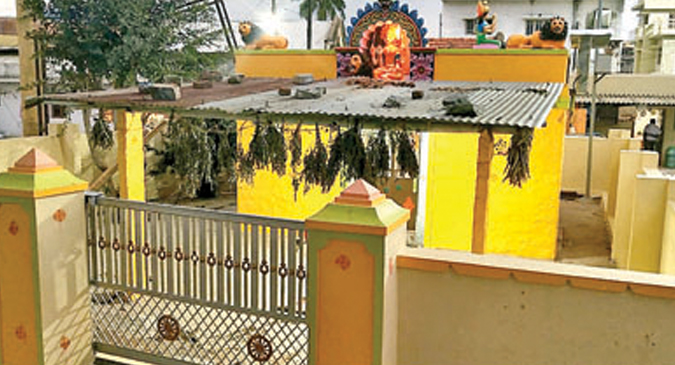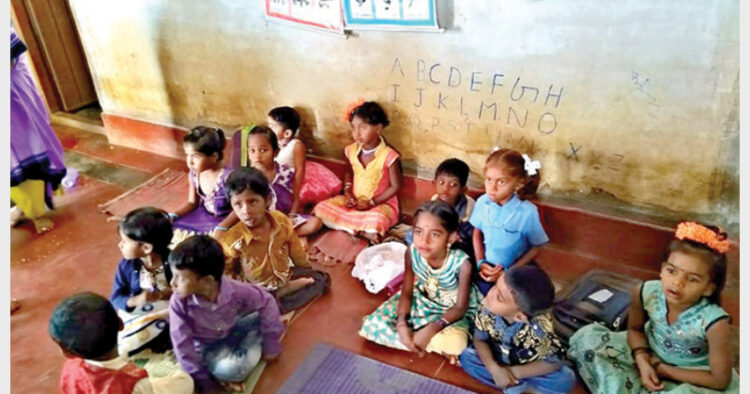The false report on untouchability in Channakal in Kolar is not the first case of yellow journalism in Karnataka using caste as the focal point. There have been many reports earlier falsely claiming discord between communities in various regions of the state. Such dailies and media outlets would do a service to the society by trying to bring all communities together instead of sowing seeds of disharmony through false and motivated reports
Earlier this month, a prominent Left-leaning Kannada daily published a report about the supposed travails of Dalits in a village called Chennkal in Kolar district of Karnataka. The report highlighting that untouchability was rampant in the village, claimed that the upper caste people mistreated Dalits to an extent that they were not even allowed to use the same corporation water tap as others. It also argued that Dalits were not allowed to enter any of the five temples in the village. A lone barber who caters to everyone refuses to service the Dalits and hence they had to travel 3-4 km away to Malur town, says the report. Quoting anonymous sources, the Prajavani report says that Dalit girls were eve-teased regularly by boys from other castes and the local police paid no heed to their complaints.

An Anganawadi School in Chennakal
However, a few concerned individuals and Sangh Swayamsevaks from Bengaluru, who felt something was amiss with the report decided to verify the claims made in the report. The Swayamsevaks also wished to see if their Seva activities can be furthered in the village. Before visiting Chennakal, they spoke to Shri Srinivas who is a resident of Malur, near Kolar and has the responsibility of Zilla Sharirik Pramukh to assess the situation. Srinivas then introduced the team to Byregowda, who is a resident of Chennakal. He volunteered to lead the team to Chennakal. The residents of the village welcomed them with warmth and affection. One of the team members, on condition of anonymity, narrated the details of their visit to Organiser that exposed the falsity of the media report.
Were Temples Restricted to Few?
Upon inspection the team found that the village has three temples and entry is not restricted to anyone or any particular castes. Two temples are of Marikamba Devi were built and managed privately. There is one temple of Varadaraja Swamy which is owned by Muzrai department of the government of Karnataka. Here too, as per government norms, the entry has not been restricted to any castes.

The Marikamba Temple at Chennakal
The team also learned that a Deepotsava was conducted at the 2 Marikamba temples as recently as January 2 where residents from all castes and communities participated with joy and unity. As is the tradition, people visit up to ‘Garbha Gruha’ and offer prayers and offerings in both the temples. However, in the Varadaraja Swamy temple, except the priest, nobody enters the main sanctum as is the tradition.
- The entire village is aghast at the fake news spread by certain sections of the media over the alleged practice of untouchability in their village
- The investigation team found pamphlets and other materials inside the Hindu temple compound propagating Christianity
The team then spoke to residents of the village from all communities to hear their views on claims made about restricted entry into the temples. The residents said that the report in the media was false and people from all castes enter the temples, and no one has any reservations against other group or community, they confirmed.
Did the Barber Discriminate?
Checking on discrimination by the barber, the villagers told them that as there are no barber shops in Chennakal, most of them go to Malur for the saloon and this is not a phenomenon restricted to the Dalits alone. That was a lie reported in media, they said. Even the cremation ground is common for all without any discrimination based on castes. To verify further, the team visited the Anganwadi centre and found out that children of all castes were being given food and taught by a teacher. The teacher, Ms Meena told the team that they celebrated the Republic Day with all these kids.
Chennakal – A Diverse Village
The village is quite diverse, and all communities are neighbours to each other, and there is no such area earmarked for Dalits as claimed in the report. The team then visited the locality in Chennakal village and verified this aspect in person and found that there was no separate area for Dalits.
Their study of the village revealed that there are around 55 houses in the village. All families have pucca houses, and the villagers were economically better off. The homes for the Dalits were newly built with aid from the government whereas the houses of the other castes were older. The team found that all communities including Dalits had modest incomes supporting them economically.
Reach of Govt Programmes
The village has successfully implemented ‘Swacch Bharat’ and all houses have toilets. The village is open defecation free. Literacy levels are low but sense of unity and community co-operation is very high among the residents. The co-operative movement is also active in the village which is a source of income for the villagers. All the three temples have been renovated with people’s own contributions and they have not taken any contributions from the government. Most of villagers have ‘Jan Dhan’ accounts. Krishna Co-operative bank, Axis bank and Federal banks have helped the villagers in opening Jan Dhan accounts.
The village economy depends on agriculture, animal husbandry and milk production which are also the primary occupations of the villagers. They grow ragi, grams, toor dal, peanuts. Those with better irrigation facility grow tomatoes, cabbage and other vegetables. A few people work in surrounding brick and tile factories. Women are involved in cattle rearing, milk production and a few are in silk farming too.
The village has five roads, and four roads are of concrete. The entire village has a functioning drainage system constructed under MNREGA. An old water tank is broken, and the local MLA has promised to build a new water tank. Milk is sold to the Karnataka Milk federation through local cooperative society formed by the block development office. Many villagers including lower castes are beneficiaries of PMJAY and PM Awas Yojanas.
Reaction to the News in Media
The entire village is aghast at the fake news spread by certain sections of the media over the alleged practice of untouchability in their village. “Our village is just 3 km from Malur taluk, on the Malur-Hosur highway and easily accessible. But we have not seen any news reporter here and are wondering as to how this news got published”, they told the team.
They suspect few disgrunted elements in the village who could have planted the news to reporters. They have formed a caste-based organisation, and hoping get some mileage must have spread the false report, the villagers say. The elders of the village to whom the team spoke to say that these young men are careless and have no serious concern for the welfare of the society expect to gain mileage as leaders of their community.
Role of Christian Missionaries?
The investigation team found pamphlets and other materials inside the Hindu temple compound propagating Christianity. It also came to the notice of the team that the rowdy elements were bailed out by the missionaries whenever the local police and administration caught them in legal hassles. Hence, the suspicion on the missionaries having goaded these youngsters to plant the news as a favour in return is high.
The villagers themselves revealed another fact. The Christian missionaries had attempted to lure the Dalits in the village to convert to Christianity in lieu of aiding them to build new houses. However, they neglected the offer and instead approached the government to help them construct new houses. With this attempt to convert failing, the missionaries could have hatched a plan to demonise the village, and the villagers are what many opined.
This is not the first case of yellow journalism in Karnataka using caste as the focal point. There have been many reports earlier falsely claiming discord between communities in various regions of the state. Such dailies and media outlets would do a service to the society by trying to bring all communities together instead of sowing seeds of disharmony through false and motivated reports.














Comments